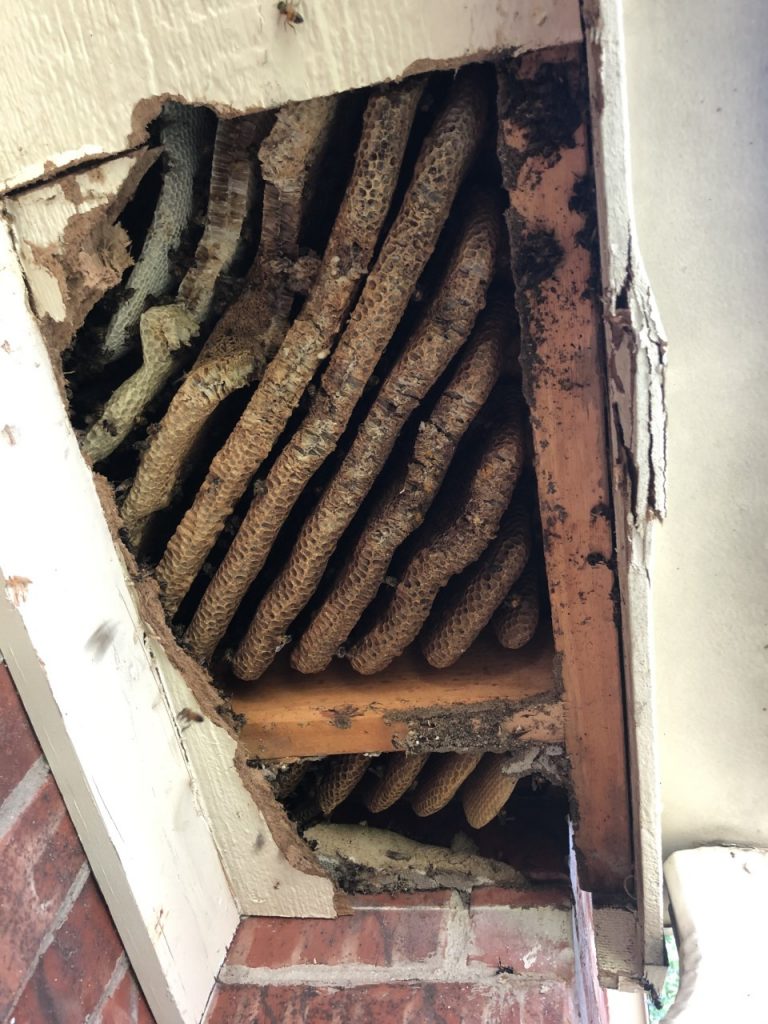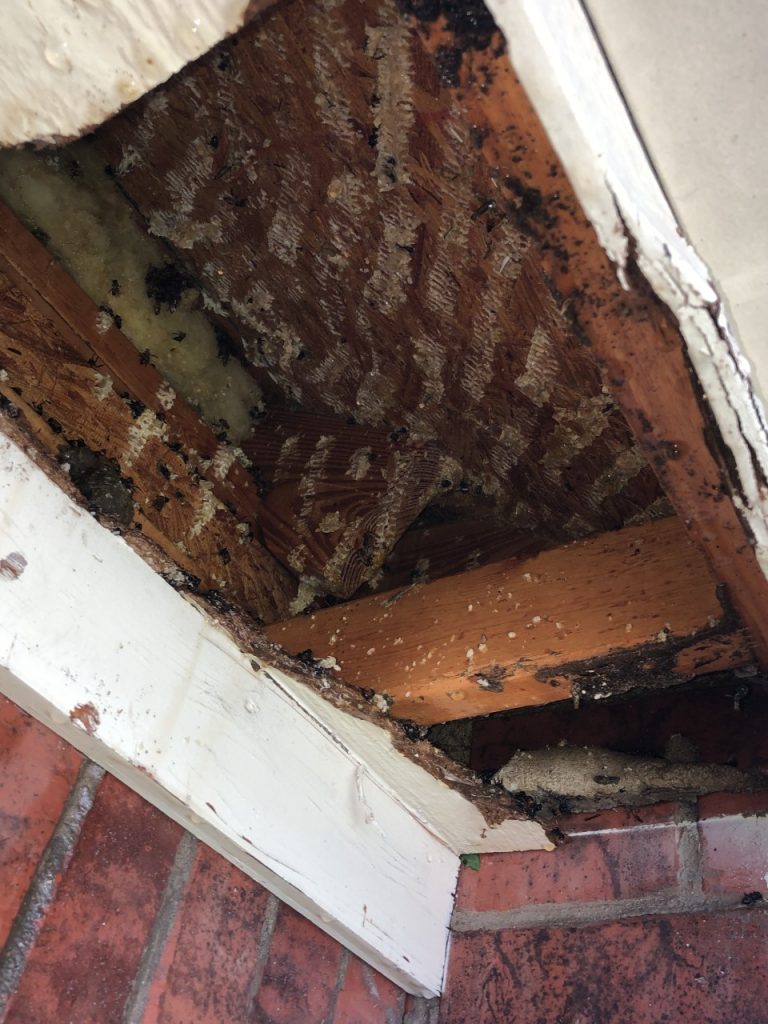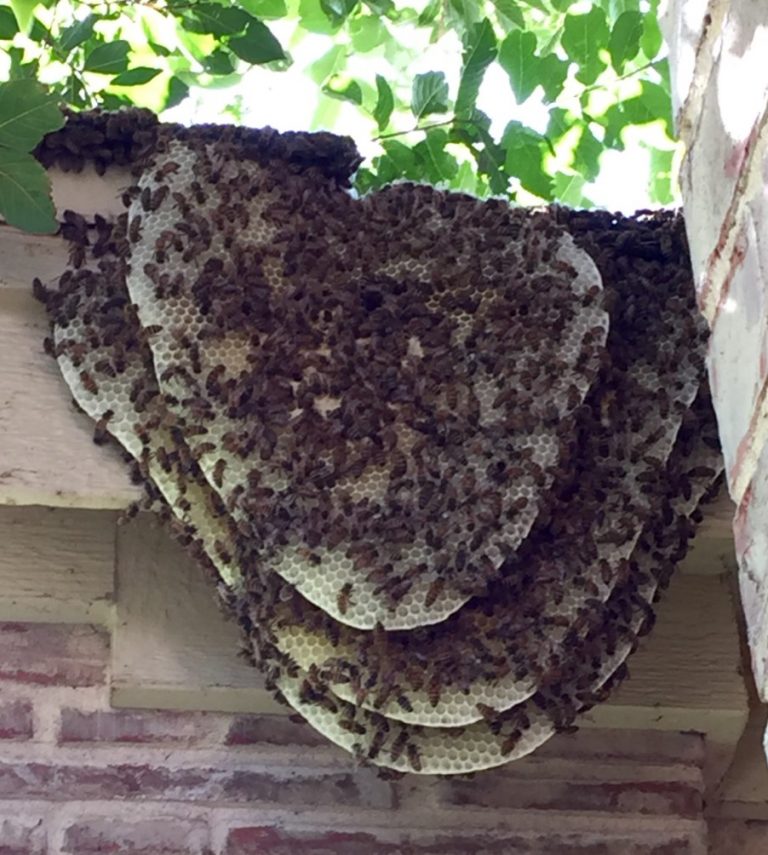There are several different types of bees that might build a hive in attics, walls, under eaves, in soffits, under porches, and in tree branches.
The most common bees include European honeybees, bumblebees, Africanized bees, and ground bees.
When to Consider Beehive Removal?
Depending on the location of the beehive, bees can be beneficial or unwanted.
Social insects live in colonies and will defend their hive. Typically, bees will only sting if their hive is threatened. But Africanized bees, otherwise known as killer bees, are known for aggressive behavior and may attack unprovoked.
Unfortunately, it can be difficult to distinguish between a European honeybee and an Africanized bee. With that, beehive removal is the safest course of action. This is especially true if the hive has made its way into your house.
Bee Allergies
But even beehives on the outside of your home could warrant removal. It is possible to provoke bees and incur a sting. Although a simple sting may not affect you too much, 5-7% of the population is highly allergic to stinging insects. What’s worse is if you stumble across a hidden hive in the ground or one camouflaged in a tree, you could get attacked by a swarm.
Bee Swarms
If the entire hive feels threatened, they will swarm together, fly after an intruder, and attack all at once. This is a very dangerous situation for anyone—with or without a bee allergy—and can potentially be fatal if the swarm is big enough. If there’s a high risk of this happening, seek shelter immediately and call us. Getting rid of bees is important to avoid these risks. Remember, it’s always better to be safe than sorry!
Can I Remove a Beehive Myself?
The only way you can get rid of the bees on your property is to remove the hive. You should know that you run a risk of getting injured if you attempt to remove an active hive (one that has bees traveling to and from it on a daily basis) on your own.
A beehive holds an average of 30,000 bees. Although many bees are passive creatures, they will sting if you threaten their hive. It is easy to appear like a threat when you are removing a beehive. That could lead to 30,000 bees chasing you down!
Why Do You Need to Sanitize after Beehive Removal?

Beehive in soffit

Beehive removed from soffit
If the hive is in or on your home, it must be removed and the area cleaned.
An old hive left in your home could attract a new colony of bees. Additionally, the hive area must be sanitized to remove any honey. Otherwise, leftover honey could attract other pests, including ants, cockroaches, rats, or raccoons.

Brad Woods
Brad is the District Manager for Dallas-Fort Worth for Trutech Wildlife Service. He graduated from the University of Arkansas at Monticello with a Bachelor of Science in Forestry and a Masters of Forest Science. Brad has worked in wildlife removal for over seven years.



